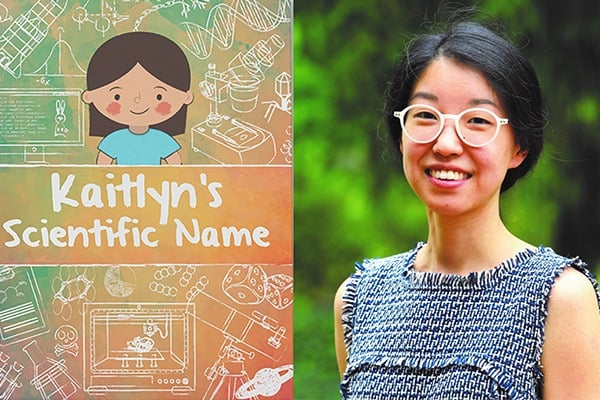There is a certain class of pediatric brain cancers that is “universally deadly,” with a median survival of 15 months and few, if any, viable treatment options. The key to combating these cancers might be in analyzing how the cells within tumor tissue—cancer cells, immune cells, and others—express genes and organize themselves spatially, says Jean Fan BS ’13, assistant professor of biomedical engineering and a member of the Center for Computational Biology.
“We want to understand how [these cells] are interacting with each other to promote disease development, and how those interactions might enable different responses to treatments,” says Fan, whose lab specializes in developing computational models and statistical analysis. “By measuring what genes are being expressed in what cells while maintaining the spatial organization of the cells in tissues, we can begin tackling important questions in clinical oncology.”
There are many questions to answer: What are the different states and subpopulations of cancer cells, and how are they organized? What happens to those cells when a patient receives clinical intervention? How do the cell populations shift in proportion to the intervention What role do spatial organizational patterns play?
These questions were unanswerable just a few years ago. Before recent advances in spatial transcriptomics technologies, researchers would have to dissociate cells in a tissue, losing the cell’s spatial organization, if they wanted to study many genes in a single cell at once, Fan says. Cellular spatial organization with fine cell state information was beyond their grasp.
“It’s like we were taking pictures, but they were black and white,” says Fan, whose interest in studying cancer genes was fostered during undergraduate work with biomedical engineering professor Rachel Karchin. “Now we can take much richer pictures with 10,000 different colors, each corresponding to different genes.”
While her lab work hasn’t yet reached pediatric patients, Fan found another way to share her passion with children. She noticed when volunteering at an after-school science club for second-grade girls that the students didn’t see themselves as scientists, even as they were experimenting. “They would casually say things like, ‘I’m not a math person,’” Fan remembers.
At the end of the program, Fan wrote and illustrated personalized storybooks that depicted each girl in various science, technology, engineering, and math careers. Fan then established CuSTEMized, a nonprofit that uses computation to make it possible for anyone to personalize these STEM-focused stories. “Computation has a lot of potential,” Fan says, “and when we empower our students with computational skills, they will do great things.”

